In today’s post, we are celebrating the top 101 female inventions that changed the world. Back then, women weren’t expected to contribute to more complex and male-controlled fields such as technology, science, and business. However, through the years, many ladies have proved and continue to prove to the rest of the world that they can also rise and excel in these fields, sometimes in more remarkable ways than men.
This article discusses the top 101 female inventions that changed the world and women’s innovation history. Some of these invention designs were more practical solutions that eventually changed people’s everyday lives. In contrast, others were more earth-shaking technological advances that would have been impossible otherwise without their makers’ ingenuity, perseverance, hard work, and sometimes even sacrifices.
RELATED: Top 100 famous inventions and most extraordinary ideas of all time
Top 101 Female Inventions
1. Airplane muffler
El Dorado Jones, famous for her nickname Iron Woman, was the owner of a metalworking factory where only women aged over 40 were employed. While she never got the funding to manufacture it, she received the credit for being the inventor of the airplane engine muffler in 1917. It was reported that this muffler could reduce noise with no effect on power at all.
It was also described as the first-ever successful exhaust muffler for airplane engines. Jones’ muffler featured a series of tiny pinwheels that could chew up sound waves and slow down the exhaust gases’ passage without forming unwanted back pressure on the engine. Unfortunately, Jones was infamous for her self-reliance, energy, and general distrust of the opposite sex. This disdain hampered the financial success of her airplane muffler.
RELATED: Top 100 famous female inventors in history & modern women inventors
2. Alphabet blocks
As a parent, you are undoubtedly familiar with alphabet blocks and their educational value in teaching your kids how to read. These alphabet blocks also inspire imagination and encourage coordination skills as a form of building toys. Alphabet blocks are indeed fun, and during the nineteenth century, these were found in school rooms all over the educated world.
Adeline D. T. Whitney authored many books for kids and adults alike. She was also the owner of the 1882 patent for the early version of these alphabet blocks, which were then available in different sizes and shapes with the ability to form letters, punctuation symbols, and numbers.
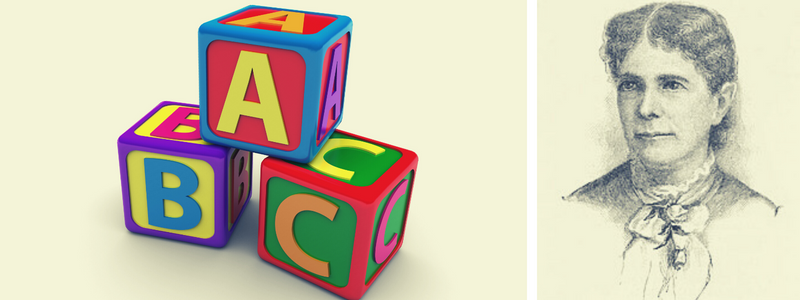
3. Antifungal drug
Fungal infections can become life-threatening to recipients of organ transplants, burn victims, patients diagnosed with AIDS, and people undergoing chemotherapy. However, less severe forms of infection such as itchy ear problems, infant oral thrush, athlete’s foot, and yeast infections can also become chronic. Today, the most common and popular antifungal drug is Nystatin, used for treating antifungal infections of the mouth, skin, esophagus, intestinal tract, and vagina.
It also has nonmedical uses, such as preventing the spread of mold on valuable artworks. While working at the New York State Department of Health’s Division of Laboratories and Research, this breakthrough drug was developed by two women, Rachel Fuller Brown and Elizabeth Lee Hazeh. Nystatin was the first-ever effective antifungal medicine.
RELATED: 100 Famous inventors and their best invention ideas
4. Apgar score
Virginia Apgar invented the Apgar score in 1952. The Apgar score offers doctors a quick means to evaluate all newborns’ health at one and five minutes after delivery and in response to resuscitation. Dr. Apgar, an anesthesiologist at Columbia University, originally developed it in 1952 to meet the need for a standardized method of infant evaluation shortly after birth.
The categories Dr. Apgar developed for assessing a newborn’s health remain the same today as those used in 1952. However, how these are utilized and developed has evolved through the years. Five criteria are used to determine the score when evaluating newborns: appearance, respiration, pulse, grimace, and activity or tone.
5. Aquarium
If you have an aquarium at home where you love watching your colorful fish, you might want to express your gratitude to Jeanne Villepreux-Power, a French naturalist. Back in 1832, she was attempting to prove that the paper nautilus didn’t take the discarded shells of other organisms; she wanted to prove that it could grow a shell on its own. To properly observe the paper nautilus for an extended period and simultaneously study marine life in general, the power came up with the idea of inventing the glass aquarium.
RELATED: 101 Inventions that changed the world in the last 100 years
6. Automatic roti maker
Pranoti Nagarkar-Israni designed the kitchen robot she named Rotimatic, which makes rotis, puris, pizza crusts, and tortillas in less than a minute. She is a firm believer in simplification, and this philosophy served as her team’s guiding principle when turning Rotimatic into reality.
A Zimplistic product, Rotimatic is the first-ever robot that makes homemade healthy wraps and Rotis with a single touch. Israni is a new wife conscious of their health and wants to prepare healthy, delicious meals in the comfort of her home. She developed Rotimatic when she faced problems with time management amidst a busy schedule.
7. Barbie doll
Have you ever wondered who invented Barbie? The first Barbie was created in 1959, available as a blond or brunette, by Ruth Handler, a savvy businesswoman. Together with her husband, Handler co-founded the Mattel Toy Company. According to the story, Handler watched her daughter play with paper dolls with friends.
She also noticed that they were playing future instead of present scenes and started imagining a doll they would like. With this in mind, she developed a doll inspired by a famous German doll initially sold to adults that she had discovered during a trip. The beauty was named Barbie after her daughter, Barbara, and Ken was invented later and named after her son.
RELATED: Understanding the different types of patents
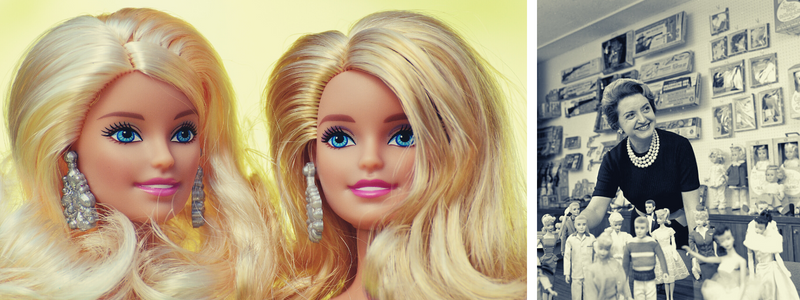
8. Beer
Would you believe that your favorite beer was created by women in Sumeria and Mesopotamia almost seven thousand years ago? Only women were allowed to drink beer and operate breweries for centuries.
They were also the only ones who could run taverns or brew the drink due to their excellent skills. It was also believed that beer was a goddess’ gift and not from a male god in many ancient societies. Jane Peyton is an author who has performed extensive research into beer’s origins for a book reporting that the touch of a woman was evident in beer through the centuries.
9. Big eye paintings
The American artist Margaret Keane was famous during the 1960s thanks to her trademark Big Eye paintings. However, during that time, people who appreciated her art were convinced that the paintings were made by Walter, her husband, and not her.
During the 1950s, Margaret’s husband started to sell her paintings as if they were his own without asking for her permission. She confronted her husband when she discovered what he was doing, which led to him intimidating, threatening, and emotionally abusing her to silence her. However, after their divorce, Margaret revealed and proved the truth to the general public, making her gain her rightful claim to the Big Eye paintings.
RELATED: Business tips for inventors: how to turn your invention into a successful product
10. Birth control pill
Katharine McCormick, a millionaire philanthropist and biologist was the woman responsible for providing the funds for research that paved the way for the discovery of the birth control pill. All women today should know her name since your life would have been very different if not for her. McCormick founded what was referred to in the New York Times as history’s most sweeping sociomedical revolution. Its impact on the US and other countries is too extensive to analyze.
11. Blissymbol Printer
t was in the mid-1980s when 12-year-old Rachel Zimmerman from Ontario, Canada, invented a device that became very useful for people dealing with communication difficulties. Zimmerman developed a software program using Blissymbols, or symbols that allow non-speaking people to communicate, including those suffering from severe physical disabilities such as cerebral palsy.
The program user points to different symbols on a board or page using a unique touchpad to communicate. Once the user touches the symbols, Zimmerman’s Blissymbol Printer translates them into written language. This allows users to correspond through email or record their thoughts.
12. Bra
Born Mary Phelps Jacob, Caresse Crosby invented the one thing that ladies of today might not be able to live without—the modern bra. In 1910, 19-year-old Mary was preparing to go to a ball, and a tight garment was the everyday undergarment back then.
However, her sheer dress didn’t go well as the corset poked out. She asked for some thread, a needle, some ribbon, and two handkerchiefs from her maid. Her design featured shoulder straps with wraparound laces fixed to the lower corners tied at the front to allow her to wear gowns cut down at the back. The patent she received in 1914 was for the backless brassiere.
RELATED: 21 Things invented by famous female inventors
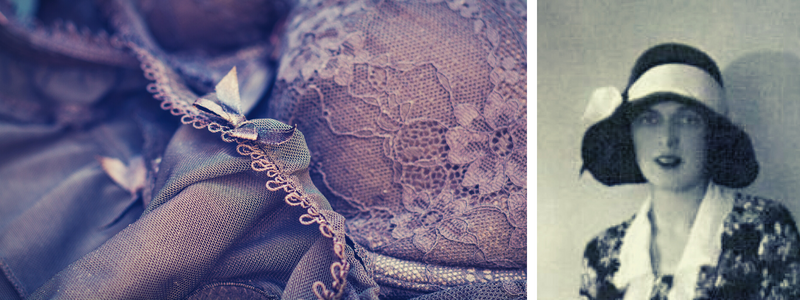
13. Bulletproof fiber
Stephanie Kwolek dreamed of being a future medical doctor. After she finished college and became a chemist, she worked temporarily as a research scientist at DuPont to save enough money for medical school. However, she was offered a permanent position at DuPont together with a promotion she couldn’t refuse. Little did she know that this would significantly change her life’s direction.
While Kwolek was studying long molecules at low temperature in 1965 to discover a lightweight plastic for car tires, she found a solid but lightweight material. This discovery resulted in the creation of the synthetic material known as Kevlar. During testing, it was shown to be five times stronger out of the water than steel and up to 20 times stronger underwater; it was also resistant to corrosion and heat.
14. Call Center System
The world can thank Erna Schneider Hoover for giving some sense of sanity to the complex telephone switching system used during the 1960s. It was in 1971 when she received a patent for her computerized telephone switching system.
Telephone call centers tend to freeze up if they get flooded with lots of simultaneous calls. Frustrated customers were left with no choice but to endure listening to the lament of the operator about the circuits being busy. If a switch were down or froze up, the customers would be left unhappy. But thanks to Hoover’s invention, this problem was addressed accordingly.
RELATED: Common mistakes for inventors to avoid
15. Call waiting and caller ID
Shirley Ann Jackson is an award-winning theoretical physicist. Her contributions to the telecommunication field paved the way for developing various technologies, such as call waiting and caller ID, fiber optic cables, and solar cells.
16. Cardiovascular drugs Eliquis® and Cozaar®
Ruth Wexler left a significant mark in cardiovascular drugs when she developed the angiotensin II receptor antagonist Cozaar® as well as a novel anticoagulant and factor Xa inhibitor Eliquis®. Wexler has over 190 patents and papers to her name, with many others still on the way. At the same time, she works as Bristol-Myers Squibb’s Executive Director, where she leads their efforts in medicinal chemistry toward cardiovascular diseases. She was also inducted in 2014 into the MEDI Hall of Fame of the ACS Division of Medicinal Chemistry.
17. Car heater
Margaret A. Wilcox developed a way of heating vehicles in 1893 by channeling the air over the engine and then into the cab. With this invention, she took advantage of the heat already being produced as the byproduct of combustion.
18. Central heating
While the revolutionary central heating design of Alice Parker in 1919 was never used, it was the first one to use natural gas for heating a house instead of wood. Before Parker’s invention, most families would use wood or coal to heat their homes in fireplaces that could not reach the whole house. Parker developed a type of natural gas furnace that can send warm air all over the place in ducts. The multiple burners made it possible to have varying temperatures for every room.
RELATED: Top 11 brilliant inventions discovered by accident
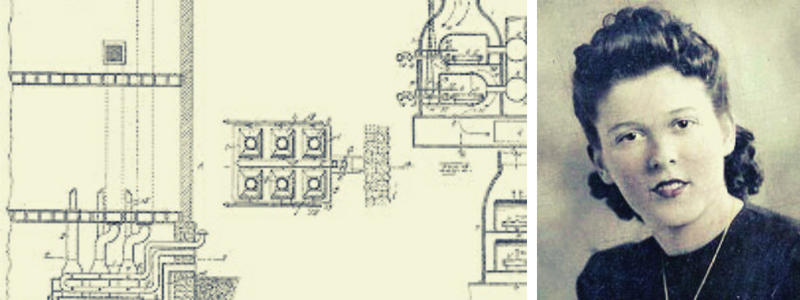
19. Chemotherapy
The oncologist Jane Cooke Wright initially pioneered the use of “chemotherapy” through methotrexate, a type of drug used for the treatment of skin cancer and breast cancer.
20. Child carriers
The peacekeeper and nurse Ann Moore was the first person to invent the child carrier Snugli during the 1960s. While working during that time as a Peace Corps nurse in Togo, West Africa, she saw something interesting done by African mothers. They carried their little ones in fabric slings securely tied to their backs. She liked how close the mothers and their babies were this way and noticed how babies looked calm because they felt more secure due to their closeness to their mothers.
Upon returning home to the US and having a child of her own, she wanted to carry her little one in the same way. Using a simple backpack and refining it to suit their needs, Moore and her mother developed a carrier that resembles those of mothers in Togo. They created the Snugli, the original soft baby carrier, and other types of specialized carrying cases.
21. Chocolate chip cookie
No one can say no to the enticing aroma of chocolate cookies as they bake to perfection in the oven on a chilly winter afternoon, nor can you resist that first warm and gooey bite. You might not believe it, but the recipe for your favorite cookies was made accidentally. Everything started when a young married couple, Ken and Ruth Wakefield, bought an old rundown toll house of Cape Cod style and turned it into a new tourist lodge named The Toll House Inn.
While baking chocolate cookies one day, Ruth realized she no longer had baking chocolate, the type that melts inside the oven and then spreads all over the cookie. She used Nestle chocolate chunks or chips instead, and the chips stayed together, marking the birth of chocolate chip cookies and the Nestle Toll House.
RELATED: Manufacturing or product licensing? The route to selling your invention
22. Circular saw
Like most inventions during the nineteenth century, the concept of the circular saw was developed independently and similarly all over the developing world. In the United States, particularly in Harvard, Massachusetts, Tabitha Babbitt, a Shaker woman, is believed to have designed and created a circular saw entirely of her design in 1810.
Legend states that she thought of the concept after seeing two Shaker men having difficulty using a pit saw. Babbitt noticed how inefficient the method was and developed a saw that would waste less effort and time. She developed a notched tin disk, then rigged this to spin using her spinning wheel’s pedal push. Through this simple invention, it became possible to cut wood with less effort and time compared to using the traditional pit saw.
23. Clothes wringer
It was in the late 1880s when Ellen Elgin, a housekeeper, invented the clothes-wringing machine that could speed up the washing and drying process. The clothes were fed in the middle of two rollers attached to a crank, and the water was wrung out as the crank turned, which made them easier to dry and hang. During Elgin’s invention, there were only a few methods to clean clothes aside from doing it manually, making this creation a big deal.
To increase her chances of succeeding, Elgin sold her patent for only $18 to a white person who wanted to manufacture the product. She claimed that her decision was because she wished white ladies to purchase the wringer, which might not be possible if they learned that the invention was patented by a Negro woman.
RELATED: Invention ideas: introducing the new community for inventors!
24. Coffee filter
Fans of pour-over coffee might be surprised to discover that the company Melitta didn’t take its name after a coffee maker from Italy. The truth is that it was named after the German entrepreneur Melitta Bentz, who came up with a minimalist and easy way of making coffee in 1908 by simply putting it inside a filter and then pouring water over it.
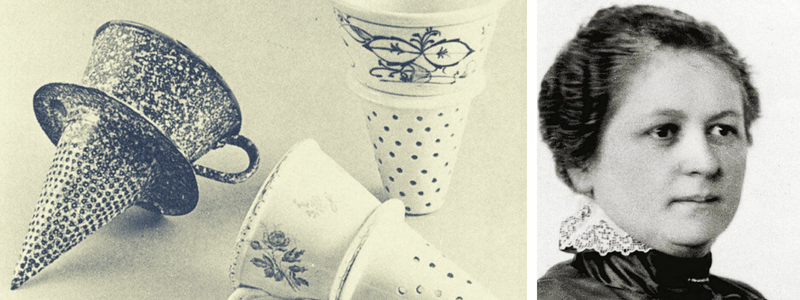
25. Computer algorithm
While translating her math professor’s lectures, Ada Lovelace added some notes of her own. She was later given credit for penning the first computer algorithm in the world in 1843.
26. Computer software
Grace Murray Hopper was a computer scientist who assisted in designing Harvard’s Mark I Computer. She also developed a compiler that could translate written language into computer code. She was also a member of the team that created COBOL, among the first languages in modern
27. Conditioner for black hair
Born Sarah Breedlove, Madam C. J. Walker was one of a few Black ladies who knew hair. It was during the 1890s that Walker started to suffer from a scalp condition that made her lose most of her gorgeous long hair. After she sought advice from others and experimented with different store-bought products and homemade remedies, Walker established a haircare business of her own, used the name Madam C. J. Walker, and started to sell her namesake Wonderful Hair Grower, which was a type of healing scalp formula and conditioning treatment.
RELATED: A Brief history of patents: patent law past and present
28. CRISPR gene editing
Emmanuelle Charpentier and Jennifer Anne Doudna invented CRISPR gene editing, a form of genetic engineering in molecular biology that made it possible to modify the genomes of living organisms. This technique is crucial in medicine and biotechnology, as it allows editing genomes in vivo with ease, extremely high precision, and in the most affordable way possible. This also comes in handy for developing genetically modified organisms, agricultural products, new medicines, or a way of controlling pests and pathogens.
29. Curling iron
No other people know hair as well as Black women. It was in 1980 when Theora Stephens received the patent for more efficient curling and pressing iron. The information about Stephens is limited, but she was known as a Black hairdresser. She was so fed up with the dull products for hair curling that she decided to take things into her own hands.
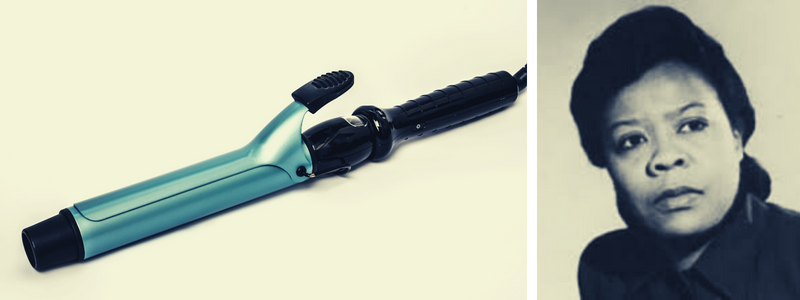
30. Diagnostic test strips
Together with her husband, Alfred Free, Helen M. Free invented easy-to-administer and cheap at-home tests not only for diabetes but also for other illnesses. This test is a paper strip whose color changes once it is dipped in urine. It was considered the first diagnostic test to be administered in a doctor’s office or home without pricy lab equipment.
ACS awarded free the Garvan Medal in 1980, which honored a woman’s distinguished service to the chemistry field. She also acted as ACS’s president in 1994, and ACS named a special award after her in 1995, the Helen M. Free Award in Public Outreach.
RELATED: Should you get a patent for your invention?
31. Dishwasher
Josephine Cochran invented the dishwasher that uses water pressure rather than the scrubbers that were the norm during her time. Even though other prototypes existed, the design that Cochran developed in 1872 was considered the most effective out of them all.
32. Disposable diaper
Marion Donovan is the woman all moms and dads should thank for coming up with disposable diapers. However, if parents today no longer need any convincing to buy these products, things were different back then. Donovan had a hard time convincing manufacturers that her product was necessary in the first place. Since her father was also an industrial manufacturer by trade, she was already familiar with the industry.
The idea to use a diaper cover occurred when she became a full-time mom who had to deal with wet bedding, baby clothes, and diapers. The mess became too much for her, and she thought there had to be a much better and easier way.
33. Electric water heater
Ida Forbes isn’t a very familiar or well-known name. Still, one sure thing is known about her: she received the patent in 1917 for the first-ever electric water heater during a time when gas was used to run the majority of water heaters.
RELATED: How open innovation is changing the game for product designers and inventors
34. Electric refrigerator
In 1914, during an era when iceboxes were the go-to choice for keeping food chilled, Florence Parpart acquired a patent for the electric refrigerator. She succeeded in marketing the product and continued to improve it over the years.
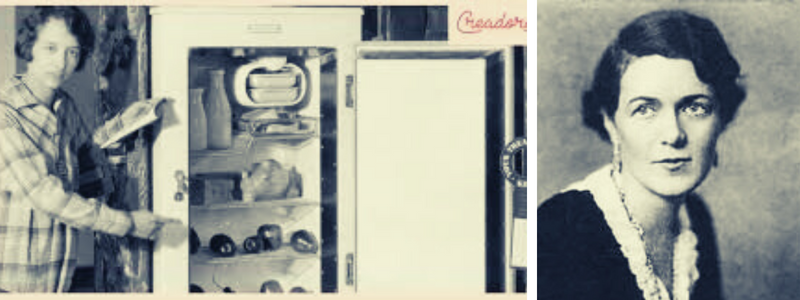
35. Electron microscopy
Pratibha Gai created the original atomic-resolution ETEM or environmental transmission electron microscope. This microscope made it possible to visualize chemical reactions at an atomic scale. Gai opted against patenting her device, the culmination of her hard work for 20 years, to further scientific advancement.
Electron microscopes use a beam of accelerated electrons as the illumination source. Since an electron’s wavelength can reach a maximum of 100,000 times shorter than visible light photons, an electron microscope has higher resolving power, unlike light microscopes, with the ability to reveal smaller objects’ structures.
These electron microscopes can investigate the ultrastructure of several inorganic and biological specimens such as cells, microorganisms, large molecules, biopsy samples, crystals, and metals. Electron microscopes are also industrially used for failure analysis and quality control. Today’s electron microscopes can produce electron micrographs using frame grabbers and specialized digital cameras for capturing images.
RELATED: How to protect your new invention idea
36. Feeding tube
A physical therapist born in Virginia, Bessie Blount Griffin, spent time looking after veterans of World War II, helping them use their feet and teeth instead of the hands they lost during combat. She developed a device to allow amputees to feed themselves and offer them an improved sense of self-confidence. This invention by Blount featured an electronic tube responsible for delivering tiny bites of food to patients at a pace of their choice.
This allows the patient to bite down on the tube to get another serving delivered through the mouthpiece connected to a machine. However, Blount’s invention was declined by the American Veterans Administration, which made her donate the rights to it to the French government. She was proud that her feeding tube proved that even Black women could invent things that could benefit humankind.
37. Fire escape
The fire escape that received a patent in 1887 was the invention of Anna Connelly. While there is minimal information about her, the patent shows that she was from Pennsylvania. Connelly’s creation paved the way for the first-ever building codes recognized in New York City. The regulations stated that it was mandatory to have a second method of escape during a fire.
The fire escape didn’t require the building to be remodeled, making it very cost-effective while helping firefighters speed up the process of getting water to the fire. This new fire escape even featured staircases with platforms in between levels to prevent people from falling.
38. Folding cabinet bed
Sarah E. Goode was an entrepreneur and inventor born in 1850 into slavery. She was also among the first African American women to be given a patent by the United States Patent and Trademark Office due to her 1885 invention, the folding cabinet bed. Goode relocated to Chicago when the civil war ended to become an entrepreneur and set up a furniture business with Archibald, her husband.
Her customers were mainly working-class people living in small apartments with limited space for furniture. Goode developed a cabinet bed she described as a folding bed to address this issue. The bed could act as a roll-top desk with compartments for stationery and other writing supplies if not used.
RELATED: How much does it cost to make a prototype for my new product invention?
39. Foot pedal trash can
Lillian Gilbreth, a psychologist and engineer conducted extensive research on workspaces and their psychological impact on productivity. Her genius in the field of ergonomics led to the creation of numerous valuable inventions, such as the foot pedal trash can. Being the mother of 12 kids, Gilbreth knew more than anyone else how important it is for homes to have efficient items. Aside from getting a patent for the foot pedal trash can, she also developed the electric food mixer. Gilbreth won more than twenty awards during her career.
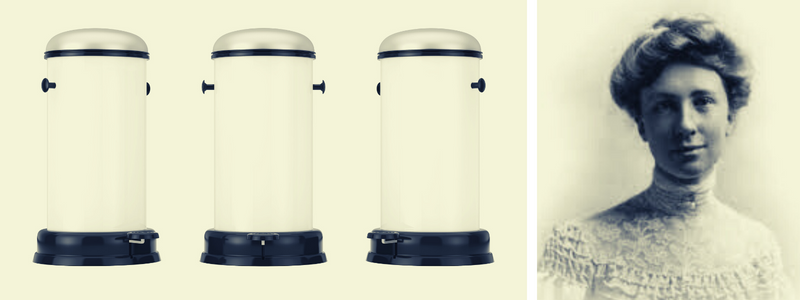
40. Fruit press
Presumably fed up with manually squeezing juice every morning, a woman from Oakland, CA, named Madeline Turner invented the elaborate machine with the ability to extract juice from fruits such as lemons, apples, and oranges. Her invention granted Turner a patent in April 1916, and she called it Turner’s Fruit Press. It is said that a member of the patent review committee called this machine ingenious, with Turner exhibiting it during the Panama-California Exposition. Imagine if Turner hadn’t invented the fruit press. Juice bars and smoothie chains wouldn’t be popular now.
41. Geobond
An inventor, businesswoman, and sculptor, Patricia Billings invented Geobond, a fireproof and almost indestructible building material. Billings studied art with a specialty in plaster of Paris sculptures. During the latter part of the 1970s, one sculpture she made fell and shattered, making her perform experiments in her basement. After eight years, she developed an additive that forms a fireproof, non-toxic, and tough plaster once mixed with concrete and gypsum. Her work earned Billings two patents, although she kept Geobond’s complete recipe a secret. Contractors, on the other hand, use Geobond daily.
RELATED: From idea to reality: turning your invention into a product
42. GIF animation
If you consider GIFs as a form of communication, Lisa Gelobter deserves a round of applause. Gelobter is the computer scientist responsible for developing the animation for making GIFs and other groundbreaking video technology such as Joost, Brightcove, Shockwave, and Hulu. A graduate of Brown University, Gelobter is currently the US Department of Education’s chief digital service officer. So the next time you want to use a GIF, make sure to thank her in your way.
43. Globes
Ellen Eliza Fitz was an American working in New Brunswick, Canada as a governess. This clever woman decided to develop a better globe. While teaching the changing seasons with the sun’s course and geography to her young charges, she thought she could do a much better job, which inspired her to design a special globe mounting.
Fitz filed a patent in 1875 for this new globe mounting which showed the Earth’s daily rotation on its axis and the annual revolution around the sun, along with the effect of these rotations. Her students could finally follow the sun’s path and durations during twilight, night, and day, all year long. The globe debuted at the Centennial Exhibition in Philadelphia in 1876. Fitz filed another patent in 1882 to show the positions of the stars.
44. Hairbrush
Although it remains unclear who invented the original comb or brush, the Black woman Lyda Newman residing in Manhattan, was the first person to receive a patent for the hairbrush in 1898. This brush by Newman was the first one that featured synthetic bristles instead of the hair of an animal such as a boar.
It was also specifically designed to offer storage and ventilation for excess hair, making it easier to clean and more sanitary. Based on her patent, Newman’s design aimed to provide an improved and new hairbrush with durable and straightforward construction, extremely effective when used and arranged to allow convenient brush cleaning whenever necessary.
RELATED: 88 New inventions and ideas that made millions
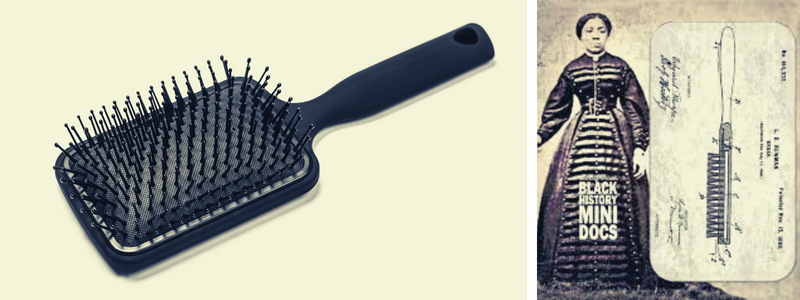
45. Home security system
During the mid-1960s, home security systems were almost nonexistent. However, Marie Van Brittan Brown wanted to feel safer in her house whenever she was alone. Being a nurse herself, she usually got home at odd hours. At that time, her neighborhood had high crime rates with a low response rate from the police.
This inspired her to take things into her own hands. In 1966, she developed a closed-circuit television security system, or CCTV, to monitor her house. It is said that Brown offered the most information and is regarded as the inventor. Albert, her husband, an electronics technician, undoubtedly helped and earned equal credit on its patent.
46. Humane cattle restraints
Temple Grandin’s innovative animal husbandry designs have resulted in fewer injuries and calmer livestock. She innovated different ways of handling cattle according to their natural behavior instead of using brute force. The center track cattle restraint system she developed is still used to manage most US cattle population.
47. Hydyne rocket fuel
The success of Explorer I, the first satellite that the United States launched into orbit, was made possible thanks to Hyde. Mary Sherman Morgan created this improved rocket fuel in 1957 while working as the technical lead at the Rocketdyne Division of North American Aviation.
RELATED: 10 Steps to turn your idea into a product
48. Hypertext fiction
Judy Malloy is a self-taught single mom, conceptual artist, and computer programmer working at a tech company during Silicon Valley’s early days. She self-published a short story in 1986 entitled Uncle Roger. It was a cynical take on the tech culture of California through the perspective of an eccentric salesman of computer chips. Back then, reading the story was a whole new experience.
It continues to live online to this day, with the reader clicking through the story’s fragments in any way they want, reshaping and twisting the storyline along the way. Malloy developed a new, elaborate database for telling her story, using what was a sophisticated search engine for that time and 32 UNIX shells. The emerging digital community acclaimed Malloy’s piece as the earliest prominent example of hypertext fiction.
49. Ice cream maker
Nancy Johnson already knew her priorities before the invention of freezers. She invented a hand-crank double-cylinder ice cream machine in 1843, and the device can create two frozen flavors simultaneously but separately.
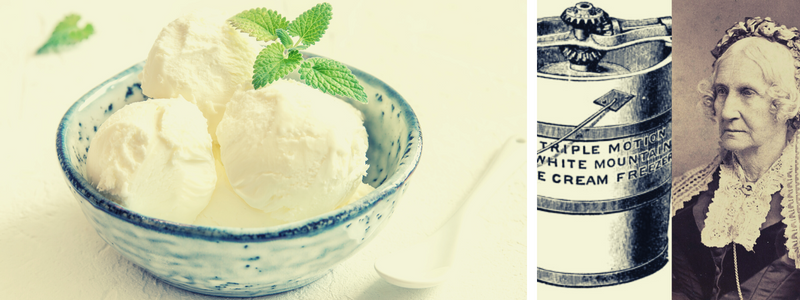
50. Illusion transmitter
Valerie Thomas is a scientist who started to work as a data analyst at NASA in 1964. During her employment, she was in charge of a project involved with NASA’s image processing systems. She supervised the creation of Landsat, the first-ever satellite to send images directly from space. Thomas started to research and experiment on an illusion transmitter in 1977, which would form the appearance of 3D images using light rays and concave mirrors. It received a patent in 1980, with NASA continuously utilizing the invention.
RELATED: 6 Questions you should ask yourself about your invention
51. Immunosuppressive drug
During Gertrude Belle Elion’s many years as a pharmacologist, she helped develop numerous drugs for treating herpes, malaria, AIDS, and cancer. Together with George Herbert Hitchings, Elion set Azathioprine, the first immunosuppressive drug that was initially used for patients undergoing chemotherapy as well as for organ transplants later on.
52. Ironing board
Although patents for folding ironing boards originally appeared during the 1860s, the ironing board Sarah Boone developed in 1892 featured one significant difference from earlier ones. It had a double-sided narrow arm that made it helpful for ironing sleeves, with no need to worry about forming creases.
53. Jerky
Native Americans relied on jerky, a specially prepared source of meat, long before European settlers arrived on the land. Made from mainly elk, deer, and buffalo meat dried in thin and long strips, jerky was a great source of protein during long winter months when the game was rare. Native American women gathered the food of the tribe growing in the wild, processed and cooked it, tended the campsite, made the clothing, and raised the children.
On the other hand, men did the fishing and hunting, took care of the horses, made the weapons and tools, and defended the tribe during the war. Of course, their roles overlapped as needed. However, considering their assumed roles, it is safe to claim that the most likely original inventors of jerky were Native American women.
RELATED: How to succeed as an inventor: what does an inventor do?
54. Laser cataract surgery
Patricia Bath developed the patented Laserphaco Probe in 1986. It makes it possible for doctors to dissolve cataracts fast and painlessly before they apply new lenses to the eyes of the patient. This technology continues to be used all over the world to prevent blindness as a result of cataracts.
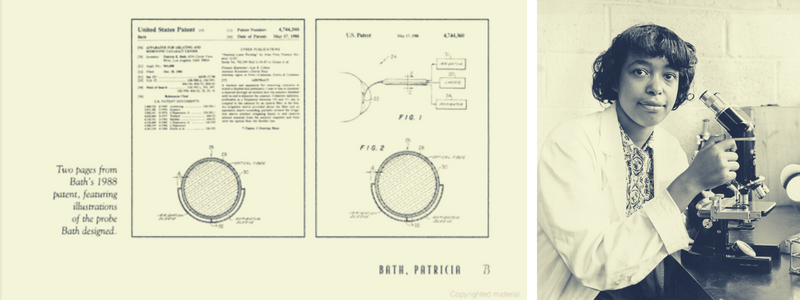
55. Life raft
Philadelphia’s Maria Beasley dreamed of a better life raft that was safe, compact, fireproof, and could be launched right away when needed. The patent stated that the new design was invented in 1880. Beasley’s life raft featured rectangular metal floats, making it different from traditional rafts with zero safety railings and hollow tube floats.
Updating the float’s design allowed Beasley’s raft to be unfolded and folded more easily for storage and use, even if guard rails were added. The patent doesn’t state how she fireproofed the raft or why it was necessary. During the 1800s, life rafts were made of metal and wood, but it seems safe to assume that water would deter fire.
RELATED: Top 25 resources for everyday inventors
56. Liquid paper
Her invention of liquid paper propelled Bette Nesmith Graham from being a simple secretary into a millionaire. Originally marketed under the name Mistake-Out, Graham’s homemade typewriter correction fluid became instantly in demand among other secretaries. She was able to perfect the recipe after additional experimentation, leading to the birth of Liquid Paper.
57. Locomotive chimney
Spurred by her passion for reducing air pollution and improving conditions in urban areas, Mary Walton developed a train chimney system in 1879 that reduced air pollution. Water was used to filter smoke, and the airborne chemicals were trapped and held in suspension.
58. Low-reflection glass
If you wear eyeglasses, you should thank Dr. Katharine Burr Blodgett for their non-reflective drink. Blodgett started an independent study of an oily substance previously discovered by another scientist. Learning how hard it was to precisely measure the importance, she looked for another way of accurately measuring transparent objects, leading to the creation of invisible or nonreflecting glass in 1938.
This effect is produced by a special coating that prevents the glass from becoming visible when light reflects off the surface. If you have ever noticed the glare on another person’s glasses, chances are they don’t have this special coating, or invisible glass, as scientists like to call it.
RELATED: 10 Movies that every new product designer should watch
59. Medical syringe
During the early days, medical practitioners used syringes that required both hands to administer the injections. Letitia Geer developed the single-handed needle that all medical practitioners continue to use to this day. The syringe was not widely used immediately after its invention because most drugs were not injectable. However, the relevance of this breakthrough continues to grow by the day.
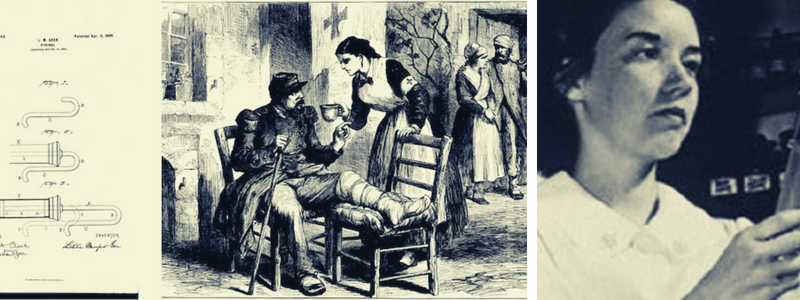
60. Microelectrode
Ida Hyde was Harvard Medical School’s first female researcher and developed one of the initial models of an intracellular micropipette electrode in 1921. It lets her monitor and stimulates a cell without disturbing the cell wall. The technology is still extensively used in today’s science laboratories.
RELATED: Invention marketing companies: don’t get scammed!
61. Mint chocolate chip
Marilyn Ricketts is the woman behind the creation of mint chocolate chip, an ice cream flavor made up of tiny chocolate chips and mint ice cream. There are instances when the liqueur crème de menthe is also used to create a mint flavor. However, there are also cases when spearmint or peppermint flavoring is used. A food coloring is often added to make the ice cream green, although you can also find it in white or beige in organic or all-natural varieties.
In 2000, around three percent of all ice cream sold was mint chocolate chip, making it the tenth most popular ice cream flavor. In July 2017, the mint chocolate chip also ranked as the fourth most popular flavor of ice cream in America. The flavor’s popularity led to its extensive use in foods like meringues, cookies, and other products such as air fresheners, cosmetics, and personal lubricants. Some brands call it choco or chocolate chip mint, mint chip, or mint ‘n chip.
62. Molecular sieves or synthetic emeralds
Edith M. Flanigen is most famous for her notable work in molecular sieves, including zeolite Y, used to improve oil refining. Her work earned her the Perkin Medal in 1992, making her the first woman who had ever done so. She also secured up to 108 patents along the way, one of which is a hydrothermal process for developing synthetic emeralds to be used in jewelry and industry.
RELATED: Understanding trademark law: intellectual property tips for inventors
63. Monopoly
Patented in 1904, “The Landlord’s Game” was initially designed to showcase unchecked capitalism’s evils. Close to three decades later, a very similar game named Monopoly was patented by a man who later sold it to Parker Brothers. The original inventor of The Landlord’s Game was Elizabeth J. Magie from Canton, Illinois, working as a stenographer daily. At night, Magie usually taught her political point of view and progressive politics to public classes.
As an independent lady, Magie was serious about her teaching and thought it would be better to use a board game to show the unfair distribution of wealth in America. She was also fed up with the super-rich monopolizing the country’s wealth while others were dealing with income inequality. Her new board game was patented in 1904 and was published after a year. The Landlord’s Game became popular on college campuses, specifically among left-wing intellectuals, then later among a Quaker community who added local neighborhoods’ names to the board.
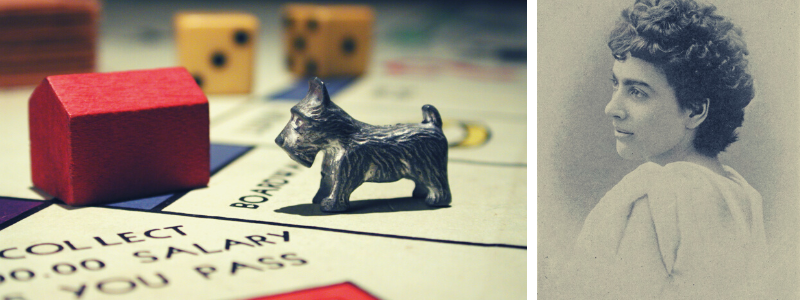
64. Myers–Briggs type indicator (MBTI)
The psychological test Myers–Briggs Type Indicator or MBTI was invented by the mother and daughter tandem, Katherine Cook Briggs and Isabel Briggs Myers. Participants of the test must answer an introspective self-report questionnaire. Responses determine which of 16 possible “types” participants align with, indicating their psychological preferences.
Each question on the test is assigned to one of four categories: perceiving or judging, intuition or sensing, extraversion or introversion, and feeling or thinking. One letter from each category is then taken to produce the test result of four letters.
RELATED: 5 Tips to turn your idea into a new product design with prototype CAD services
65. Naturally colored cotton
Before the breakthrough plant-breeding work of Sally Fox, naturally colored cotton was temperamental, rare, and could only be spun and picked by hand. Fox’s work resulted in cotton that grows in various colors and can be machine-spun and harvested. It allows for a significant reduction in bleach and chemical processing and the need to use synthetic dyes.
66. Optical analysis system
Have you ever wondered how robots are guided during operations or how robotically manufactured products are made possible in the first place? Ellen Ochoa was working on her electrical engineering doctorate, exploring holograms and lasers when she co-invented the Optical Analysis System with the ability to detect imperfections in repeating patterns. This made it possible to see an Image close to an image. This invention is useful for processes where detecting the slightest deviation and pattern consistency are crucial.
The system received a patent in 1987 and is still used for equipment inspection, intricate parts manufacturing, and quality control operations through a robot-controlled guidance system and manufacturing processes. Ochoa is mostly admired as the first-ever female Hispanic astronaut who entered space in 1993 aboard the space shuttle discovery
RELATED: The Basics of patent drawings for new inventions or prototypes
67. Paper bag machine
The brilliant 12-year-old Margaret E. Knight from York, Maine, made her very first invention in 1850, a device that stopped the operation of cotton mill machinery if a thread or other objects getting stuck. Knight loved inventing things, and this first experience remained in her memory. While employed at the Columbia Paper Bag Company after the Civil War, she thought that a better bag could be made that could stand up on its own with a flat bottom to make packing easier.
She made some drawings and developed a model for the machine that could glue the bottom of the bag together. This machine was patented in 1871, and the new paper bag became an instant hit. Knight received more than 20 patents for her creations, including a skirt and dress shield, a shoe-cutting machine, and a rotary engine.
68. Pastry fork
Anna Magrin received a patent in March 1892 for her invention of the pastry fork. This pastry fork was not the special small fork for eating cake and pie; it was a utensil for mixing dough for pastries, cookies, and pie crust. The fork also made it easier to mash potatoes and beat eggs. This helpful tool served as the precursor to the electric mixer. It also made mixing ingredients while baking and cooking less messy and less challenging at the same time.
RELATED: 5 Tips for successful product design
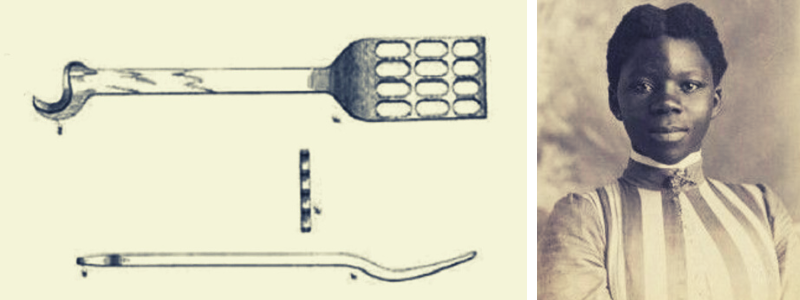
69. Permanent wave machine
The permanent wave machine was invented by Marjorie Stewart Joyner, which solidified her prominent mark in the history of cosmetology. Joyner helped write the first laws on cosmetology in Illinois, and, together with Mary Bethune McLeod, she established the United Beauty School Owners and Teachers Association in 1945. She was also active in the African American community and raised funds for Black colleges. Joyner also worked with First Lady Eleanor Roosevelt to fight racial discrimination and segregation.
70. Pertussis vaccine
Leila Alice Denmark was a pioneering female American medical researcher, doctor, and the pediatric community’s outspoken voice. A centenarian, Denmark earned the credit for co-developing the pertussis vaccine. Pertussis, a 100-day cough or whooping cough, is a highly contagious bacterial disease.
Its initial symptoms are often the same as those of a common cold: a mild cough, runny nose, and fever followed by severe coughing fits that last for weeks. After a coughing fit, a high-pitched gasp or whooping sound may occur when the patient breathes in. This coughing lasts for ten weeks or more, which explains the name 100-day cough.
71. Photo enhancement
While Barbara Askins was employed at NASA, one of her tasks was to look for a way of improving the quality of images captured from space. Her technique of enhancing photo negatives was much more widely relevant since it could also be used for clarifying photographs even after they were developed. This technology was therefore also adapted for restoring historical photos and X-rays.
RELATED: Manufacturing or product licensing? The route to selling your invention
72. Portable optical biosensors
While working for the United States Naval Research Laboratory, Frances Ligler invented automated biosensors for use in the field. These sensors can detect pollutants, pathogens, explosives, and toxins.
Ligler’s sensors were used for detecting botulinum and anthrax toxin during Operation Desert Storm. Her group was also responsible for developing the underlying technology for the RAPTOR automated portable biosensor. The US Navy used these sensors to test the water, while NATO used them to analyze biological pathogens and toxins. Ligler currently works as Analytical Chemistry’s Associate Editor.
73. Q-tips
Q-tips were among the more ingenious inventions of the 1920s. Leo Gerstenzang, an American businessman, born in Poland, was named the inventor of Q-tips in 1923. However, Ziuta, his wife, played a very significant role in the discovery of the Q-tip.
One day, while watching his wife bathe their baby, he noticed how she wrapped the tip of a toothpick with a piece of cotton to clean their ears. This was when he realized he had just thought of a product that would be a hit among women. Sadly, there was no official confirmation of Ziuta’s influence, so some people consider her role in the invention of the Q-tips somewhat legendary.
RELATED: 10 Simple products that made millions for inventors
74. Pizza saver
Carmela Vitale from Dix Hills, New York, is the woman behind that small stool you find in the middle of your favorite pizza. She received a patent for the pizza saver in 1985. A pizza saver is also known as a pizza stool, pizza table, pizza chair, pizza bone, pizza ottoman, pizza lofter, and package saver.
It is an object that prevents the top of food containers, like a pizza or cake box, from collapsing or caving in at the middle and touching or ruining the food inside. It is made of plastic and has three or four legs. A pizza saver is also white most of the time, and it is common practice to put a pizza saver in the middle of the pizza before closing the box lid for delivery.
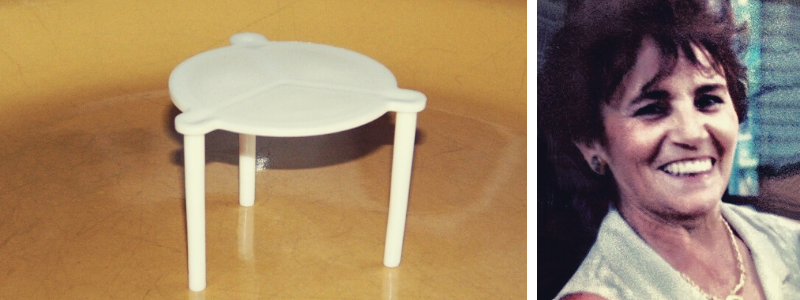
75. Radium and polonium
Marie Curie is possibly one of the most popular physicists that the world has ever known. She is well-remembered and revered for discovering the elements polonium and radium. Curie and Pierre, her husband, took home the Nobel Prize for Physics with Henri Becquerel for their separate work on radioactivity.
She won another Nobel Prize in 1911 for chemistry, developing a way to measure radioactivity. She also supervised the establishment of the first-ever radium institute for studying activity as well as for biological research into cancer treatment. During World War I, Curie also invented small and mobile X-ray units that could be used for diagnosing injuries close to the battlefront. It earned her the credit for saving the lives of over one million soldiers.
RELATED: How Cad Crowd helps inventors design innovative products
76. ReCell
Dr. Fiona Wood transformed medical treatment for burn victims when she invented spray-on skin. It was in 1903 when Dr. Wood started to work with Marie Stoner, a medical scientist, to develop a technique for growing skin tissue directly on the patients rather than inside a culture flask. After two years, the two of them launched ReCell, which is a spray-on skin cell solution. ReCell captured international acclaim in 2002 after Dr. Wood used it to treat victims who sustained severe burns during Bali, Indonesia’s 2002 terrorist attack.
77. Retractable dog leash
According to Mary A. Delaney, the leash she invented could be shortened at just a moment’s notice. its purpose was to ensure that dogs don’t run on the wrong side of pedestrians or lamp posts in a way that often annoys owners.
78. Rock’ n’ roll
There are some debates about who invented rock ‘n’ roll music. However, during the 1930s, Sister Rosetta Tharpe was the first to mix folk music, gospel music, and blues with the rock and roll pulsating swing. Tharpe’s style is undoubtedly a predecessor to rock ‘n’ roll that influenced many music legends, including Elvis Presley and Johnny Cash.
RELATED: Want tips on how to create a new product?
79. Rolling pin
Inventive Age, an 1891 magazine, printed something about the rolling pin in their New Patents for Sale column. It stated that Catharine Deiner marketed the rolling pin, whose patent she had received just a month previously. The improved rolling pin was made available for sale and was made up of a rolling pin with an adjustable sleeve that, once placed on the hook, gave the user four cake cutters, making it possible to cut up dough fast enough into cakes with no waste. This could be used by families and in bakeries.
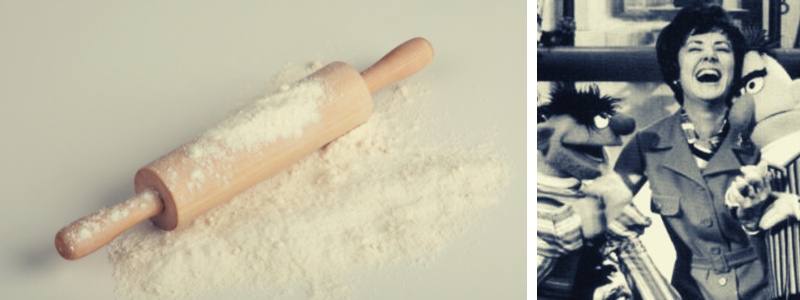
80. Sanitary belt
If you find menstruation a taboo topic today, you will not believe how ladies during the 1950s had to be hush-hush about it. Although the market was already filled with the earliest versions of disposable pads, these were costly and even awkward to wear as they slipped back and forth. On top of that, most women were too shy to ask for them at stores directly. It made them use less sanitary ways such as rags and cloth pads every time they had their period.
Mary Beatrice Davidson Kenner knew that there should be a better way. It was in 1954 when she filed for a patent for her creation, an adjustable belt made for sanitary napkins featuring a moisture-proof pocket that secured the pad and was meant to be worn under ladies’ garments. However, due to racism, it was not until three years later that Kenner earned the patent for the sanitary belt.
RELATED: How much does it cost to produce a product? Bringing your invention to market
81. Semiconductor saturable-absorber mirror
Ursula Keller invented and demonstrated the SESAM or semiconductor saturable absorber mirror in 1992. SESAMs are saturable absorbers used in mode-locking lasers. As early as 1974, semiconductor saturable absorbers were being used for laser mode-locking when p-type germanium was used for mode locking a carbon dioxide laser that generated up to 500 picoseconds of pulses.
It wasn’t long afterward that SESAMs were developed to become intracavity saturable absorber devices due to the structure’s more inherent simplicity. From then on, using SESAMs allowed various orders of magnitude to improve the average powers, pulse durations, repetition rates, and pulse energies of ultrafast lasers in a solid state.
82. Signal flares
Martha Coston was officially named as the administratrix on the patent made in 1961 that changed the method of communication between the vessels of the US Navy. However, Benjamin Franklin Coston, her husband, received the official credit, even though he was already dead during the ten years Martha worked with pyrotechnic engineers to turn his idea into reality. It was only after 12 years that Martha got a patent for the modified system, this time under her name.
RELATED: 8 Impressive industrial design portfolios on Cad Crowd
83. Software that made the moon landing possible
Neil Armstrong made history decades ago when he took his popular first small step on the moon’s surface. However, as the adage goes, there is always a woman behind every great man, and in the case of Armstrong, the woman was none other than Margaret Hamilton. Hamilton was the programmer who developed the software that made it possible for Armstrong to land on the moon in the first place.
Through this, Hamilton assisted in developing priority and asynchronous scheduling software that let computers on board prioritize vital tasks. At the same time, it also placed less necessary or standard functions on hold until the completion of all priority tasks. Without this innovative software, there is a big chance that the mission would have been a complete failure.
84. Science fiction
Mary Shelley invented science fiction in 1818. You can thank her for the existence of all of the hypermasculine adventures in space where women need rescuing from robot dragons and stuff. Shelley’s novel entitled Frankenstein: or, The Modern Prometheus started a new genre that has remained popular for two hundred years. This was a significant feat for a woman born when writing was considered a kind of work exclusively for men and men alone.
RELATED: 9 Steps to invent a new product design
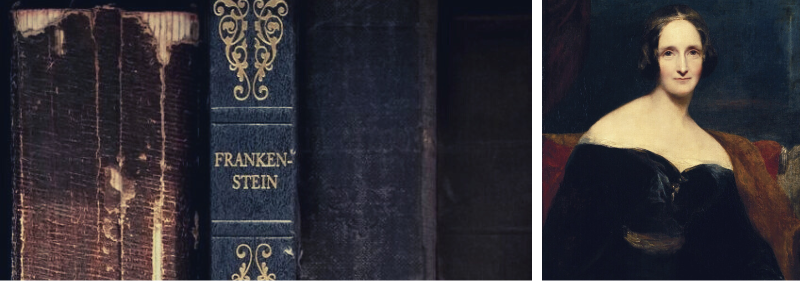
85. Space rocket propulsion system
The hydrazine resists the jet was the groundbreaking invention of Yvonne Brill in 1974. These different streamlined rocket propulsion systems required various kinds of fuel with additional prohibitive weight and turned them into a lighter design with only one energy source. The monopropellant thrusters have become the standard today, which is why self-propelling satellites have become possible.
86. Space station batteries
Solar power makes the International Space Station function, but the Earth tends to block the sun’s rays for a third of its rotation. Olga Gonzalez-Sanabria invented long-life nickel-hydrogen batteries in 1980. Thanks to these batteries, the International Space Station never loses power, even during the dark part of the rotation.
87. Stem cell isolation
Ann Tsukamoto co-patented the process of isolating the human stem cells in bone marrow in 1991. It was a significant breakthrough in cancer research and has already saved thousands of lives since its development.
88. Straw and silk weaving machine
Mary Kies was the first-ever American woman to receive a patent from the government of the United States. Kies’ invention was a macdeviceat can weave silk and straw for fashionable hats.
RELATED: How to know if your product design is worth a million bucks
89. Street sweeper
Although Florence Parpart’s street sweeper design was not necessarily the first, it was a significant improvement on previous models. In fact, after two years after receiving her patent, Parpart already had contracts all over the US for manufacturing her design.
90. Submarine telescope and lamp
The 1845 patent Sarah Mather received was for the submarine telescope, an apparatus featuring a lamp connected to a tub that was sunk under water. Underwater vessels didn’t use it; instead, it was meant for the people above water who were trying to see into its depths to investigate damaged ship hulls, wrecks, and enemy activities during the Civil War.
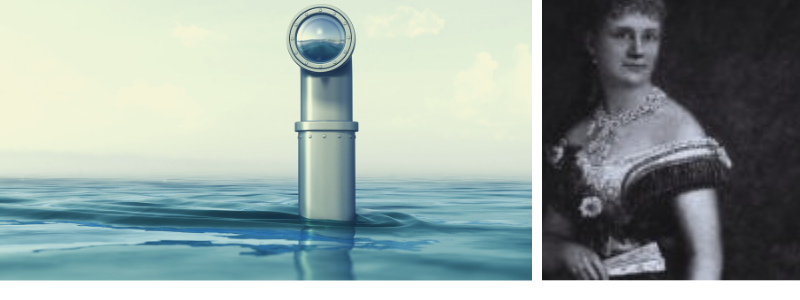
91. System for train noise reduction
Aside from the locomotive chimney that helped minimize noise, Mary Walton also acquired another patent in 1881 to significantly reduce the noise of the elevated railways in New York City by using boxes of sand to insulate the tracks. The rights to this invention were almost immediately bought by the Metropolitan Railroad of New York City.
RELATED: Getting funding for your new product or invention
92. Thermoelectric power generator
Maria Telkes, an MIT researcher, is considered a pioneer in the industry of solar thermal storage systems. It was in 1947 that she invented the very first solar-heated system for her house in Dover, Massachusetts.
93. Tissue holder
Even while disabled because of her multiple sclerosis, Mary Davidson developed an invention that made life easier for people today. Her invention, the tissue holder, featured a design that was an upgraded version of the traditional holder that ensured the accessibility of the loose end of bathroom tissue rolls all the time.
94. Ultrafast lasers
Ursula Keller was the woman behind the invention of ultrafast lasers, which are now deemed extremely helpful in different fields. Doctors, for example, use these ultrafast lasers to precisely cut out cancers.
RELATED: How to know if you should pursue your invention idea
95. Vacuum canning
Amanda Theodosia Jones may not be your average woman. Aside from being a magazine editor, she was also into spiritualism and considered a medium. However, her inventive mind helped bring about something that became very useful in the following years. One day, Jones woke up with a brilliant idea after taking a nap. According to her autobiography, for one, this idea was hers and hers alone. There have been debates on whether Jones’ idea was actually from her spirit muse because, after all, she credited numerous life events to the spirits’ guidance.
Another source also claims that her dead brother’s spirit advised her that there was a better way of preserving fruits. Whatever it was, the idea was valid, and Jones sought the help of Leroy C. Cooley, a college professor, to put her theory to the test. She wrote in her book that she saw how it was possible to produce fruits without needing to cook them first—the air required to be removed from the cells and replaced with fluid. The fluid must also be airless, like water, a light sugar syrup, or the fruit’s juice itself.
This canning method was different from that of Nicolas-Francois Appert, in which food must be well-cooked first, often leading to loss of flavor. After some tests and experimentations, Jones and Cooley raised the internal temperature to 120 degrees Fahrenheit for sealing off the canning jars. The still uncooked fruit expanded with the air forced out of the pot.
Jones applied for a total of seven patents in 1873. It was commendable for Cooley to leave the honor to Jones; his name was never stated on the patent. This vacuuming process was called the Jones process and the Pure Food Vacuum Preserving Process, and this soon became the standard technique used in the US.
RELATED: How to do a USPTO patent search
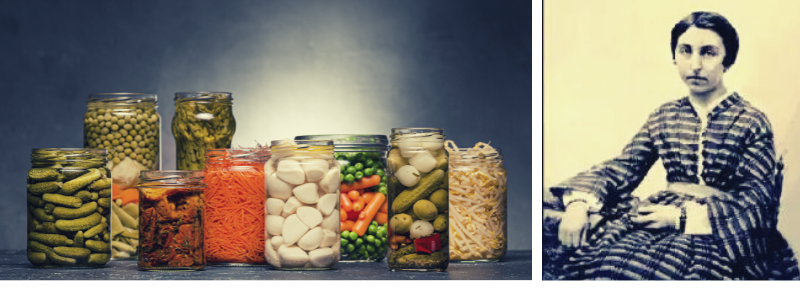
96. VoIP
VoIP, or Voice Over Internet Protocol, is the same technology that lets you make phone calls using the internet. Marian Croak is the woman you should be thanking because if it weren’t for her, you would never be able to have long-distance chats over Skype or connect with your colleagues via Google Hangouts. It was in 1982 that Croak became a part of AT&T, and there, she invented the core technology that made it possible to use the internet to communicate through video and audio alike.
Croak holds more than 200 patents, one of which is for text-based donation services. Yes, you’ve read that right. It was all thanks to Croak that you can simply text a code every time you want to make donations to charitable organizations. In 2014, Croak parted ways with AT&T and is now a part of Google, working as the vice president of engineering and supervising YouTube’s reliability engineering.
97. Wash-and-wear cotton fabric
Ruth Benerito was a cellulose expert working for the United States Department of Agriculture. While there, she discovered the cross-linking procedure that reinforced the bones between the chainlike cellulose molecules of cotton, resulting in reduced wrinkles after washing. Benerito’s research also paved the way for creating the flame-retardant fabric. Throughout her career, Benerito had over 200 publications and 55 patents.
98. Waterproof leather protector
Lab partners Patsy O’Connell Sherman and Sam Smith were trying to develop a new type of rubber for jet fuel lines when they discovered an insoluble polymer that was stain and waterproof. This polymer soon became known as Scotchgard.
RELATED: The benefits of outsourcing your product design
99. Windshield wiper
Can you imagine what life must have been like before the windshield wiper was invented? A native of Alabama, Mary Anderson was visiting New York City. She was traveling on a trolley when the rain started to pour. Sleet soon piled up on the windshield, making it impossible for the driver to see correctly. He had no choice but to stick his head to the side and wipe the windscreen by reaching out with his arms. The rest of the streetcar drivers were in the same predicament.
When she arrived back in Birmingham, Anderson pondered over the problem, determined to look for a solution. The one thing clear to her was that visibility in snow, sleet, and rain was a concern for the safety of all vehicle drivers. She received a patent for a window cleaning device in 1903, and the machine was meant for electric cars and other vehicles. This device featured a pair of spring-loaded rubber blades attached above the windshield, swinging across the pane independently as needed.
The driver manually operated the blades using a handle from inside the vehicle. The edges could be simply removed if the weather was dry. However, this device was rejected despite seeming necessary and novel. The primary complaint about the device was that it would distract the driver. However, it appears that Anderson only made a single serious attempt, reaching out to a Canadian firm that rejected the design because of its lack of commercial value.
RELATED: 18 Companies that use crowdsourcing for new product design & prototype innovation
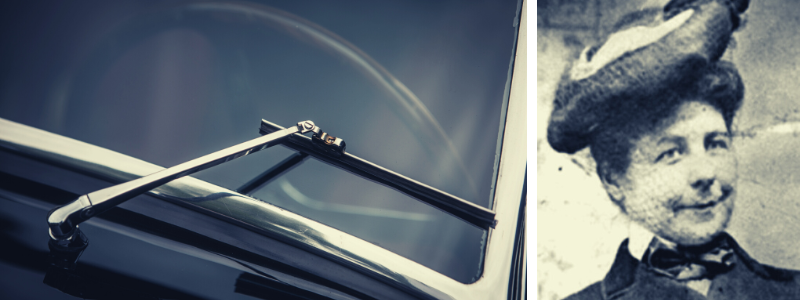
100. Wireless transmission technology
Hedy Lamarr was a famous movie star, but during World War II, she was in the spotlight after inventing the frequency-hopping communication system in 1941 that could guide torpedoes while remaining undetected. This breakthrough creation of Lamarr led to more modern inventions, including Bluetooth, GPS, and WiFi.
Recognition for her work came later in life when Lamarr was given the Electronic Frontier Foundation Pioneer Award in 1997. At that time, her son said that she had already lost her youth, beauty, and youth when he received the award on her behalf. Lamarr was also inducted in 2014 into the National Inventors Hall of Fame.
101. Word processor
Evelyn Berezin invented the first-word processor in the world in addition to developing the first-ever computerized booking system for airlines. Realizing that her gender would prevent her from moving up the ladder, she also established Redactron, her own company, to ensure that her inventions would get out on the market.
New product development – Cad Crowd can help.
Cad Crowd assists entrepreneurs and small businesses create their product designs and developing new inventions by connecting them with top-of-the-line freelance designers. If you need assistance, contact us now!
